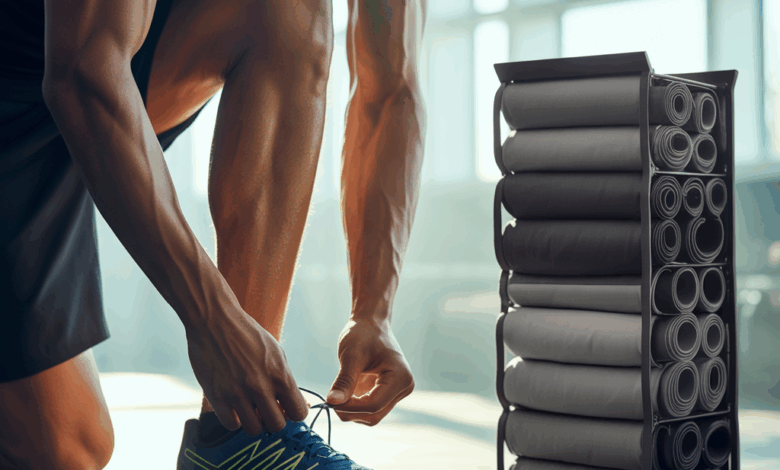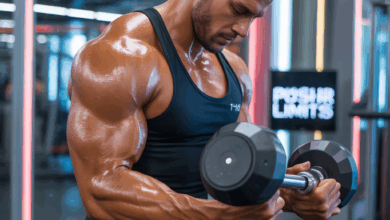Workout Clothes Organizer: Smart Ways to Simplify Your Active Life

Have you ever stood in front of a messy closet at 6 a.m., heart racing and time slipping away, wondering which sweaty top is clean and which pair of leggings is missing its match? If so, you’re not alone. Busy athletes, parents, and weekend warriors all face the same small-but-costly problem: disorganized activewear that steals time, motivation, and momentum. A smart workout clothes organizer can change that morning scramble into a calm, efficient start to your day.
Why an Organized Activewear System Matters
Organization isn’t just about aesthetics — it improves consistency. When your training clothes are easy to find and ready to wear, you’re more likely to keep habits like morning runs, lunchtime gym sessions, or evening yoga. Implementing a practical activewear storage solution reduces decision fatigue, keeps clothes fresher, and helps you care for technical fabrics that need specific washing or drying. Whether you prefer a home gym, a compact apartment setup, or a travel-ready system, an intentional gym clothes organizer makes your fitness routine frictionless.
Top Workout Clothes Organizer Ideas That Actually Work
1. Dedicated Bins and Labeled Drawers
Use labeled fabric bins or drawer dividers for categories: tops, bottoms, sports bras, socks, and specialty gear (compression wear, swimwear). Clear or mesh bins let you see contents quickly — ideal for quick outfit choices before a sunrise session.
2. Hanging Organizers for Small Spaces
Closet hanging organizers with compartments are perfect for apartments. Hang outfit sets together (top + bottoms + socks) so grabbing a complete look takes seconds. This is also a great place to keep bibs, headbands, and small accessories.
3. Mesh Laundry Hamper or Double-Bag System
Separate sweaty clothes immediately with a dual-compartment hamper: one side for sweaty/dirty items and the other for regular laundry. This prevents odor transfer and helps you remember to launder performance fabrics on gentle cycles.
4. Portable Workout Gear Organizer Bag
If you commute to the gym or travel frequently, use a ventilated gym bag or a portable organizer with shoe and wet pockets. Look for breathable fabrics and a waterproof wet pocket for damp towels or swimsuits.
5. Shoe Racks and Boot Trays
Keep running shoes and cross-trainers organized and aired out on a small shoe rack near the door. A boot tray or washable mat helps contain mud and sweat, keeping floors and closets cleaner.
How to Build Your Perfect Workout Clothes Organizer System
Start with a quick audit. Pull everything out and sort by type and frequency of use. Ask yourself: which pieces are for daily training, which are for special classes, and which need seasonal storage? From there, choose storage options that match your space and lifestyle.
- High-use items: front-and-center in drawers or the top of hanging organizers.
- Delicate or compression garments: folded carefully in a drawer or stored flat to preserve elasticity.
- Seasonal items: vacuum-sealed bags or labeled bins on high shelves.
Real-world Example: The Busy Parent
Maria, a mom who trains before sunrise, keeps three labeled bins — “Today,” “Laundry,” and “Extras.” Each night she places her planned outfit in “Today” (top, leggings, socks). The morning routine is automatic: grab the set, head out the door, no decisions required. Dirty clothes go straight into the “Laundry” compartment, keeping the system sustainable.
Fitness Tips That Pair Well with an Organized Closet
When your gear is set, your workouts follow. Here are practical tips to maximize both efficiency and effectiveness.
- Plan micro-workouts: Keep short HIIT or mobility routines in a weekly calendar to pair with your organized outfit sets.
- Rotate training types: Alternate cardio, strength, and flexibility sessions to protect joints and keep motivation high.
- Care for performance fabrics: Wash technical fabrics inside out, on cold, and avoid fabric softeners to preserve moisture-wicking properties.
- Prep hydration and snacks: Keep a bottle and a small protein snack near your “Today” outfit to streamline pre- or post-workout fueling.
Quick Workout Variations to Try
- 15-minute AM HIIT: 30s on/15s off intervals — jump squats, push-ups, mountain climbers, plank holds.
- 30-minute strength circuit: 3 rounds of squats, bent-over rows, lunges, and glute bridges with minimal rest.
- Cooling down: 10 minutes of mobility and foam rolling to preserve recovery and reduce soreness.
Healthy Lifestyle Habits to Support Your Activewear and Routine
Maintaining an organized wardrobe is easier when your overall habits align. Prioritize sleep, hydration, and nutrition so you feel energized to use your organized system.
- Sleep: Aim for 7–9 hours — better recovery means you’ll stick to workouts.
- Hydration: Drink water throughout the day; keep a reusable bottle in your workout bag.
- Nutrition: Simple protein + carb snacks after training help recovery (Greek yogurt, banana with nut butter, or a protein shake). For more eating strategies, check our nutrition guides.
- Behavioral cues: Place your organized outfit where you’ll see it — a visual trigger increases adherence. Learn more recovery and habit ideas on our wellness tips page.
Organizing for Travel and On-the-Go Training
Traveling athletes need portable solutions. Use packing cubes to separate clean vs. worn clothes, and include a small mesh laundry bag for sweaty items. A compact workout clothes organizer like a hanging toiletry-turned-gear bag keeps pairs together and reduces searching in hotel rooms or Airbnbs.
Workout Clothes Organizer: Common Questions
Q: How should I store sweaty gym clothes to avoid smells?
A: Store sweaty clothes in a ventilated hamper or mesh bag until you can launder them. Avoid leaving damp clothes in a closed gym bag. For immediate odor control, hang items in a well-ventilated area and use moisture-wicking liners in bags.
Q: What’s the best way to care for performance fabrics?
A: Wash performance fabrics on cold, inside out, with mild detergent. Skip fabric softeners and high heat in dryers — air dry or tumble on low. This preserves moisture-wicking and compression qualities.
Q: Can a workout clothes organizer help me stick to a fitness routine?
A: Yes. Reducing decision fatigue by pre-selecting outfits and organizing gear removes small barriers that can derail consistency. Pair this with simple pre-planned workouts to build a sustainable habit. See our workout routines for ideas you can pair with your organizer system.
Conclusion: Make Your Next Workout Easier — Start With Your Closet
Transforming your mornings, commutes, and travel days starts with a thoughtful workout clothes organizer. Whether you choose hanging compartments, labeled bins, a dual-hamper system, or a travel packing setup, the right storage solution saves time, prolongs the life of performance fabrics, and supports consistent training. Pick one organizing strategy this week, set out tomorrow’s outfit tonight, and make your next workout the easiest choice of your day.
Ready to simplify your routine? Try creating a “Today” bin or hanging outfit system tonight and commit to one 15-minute workout in the morning. For more structured plans, explore our workout routines, or check the nutrition guides to fuel your training.





